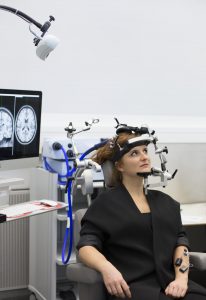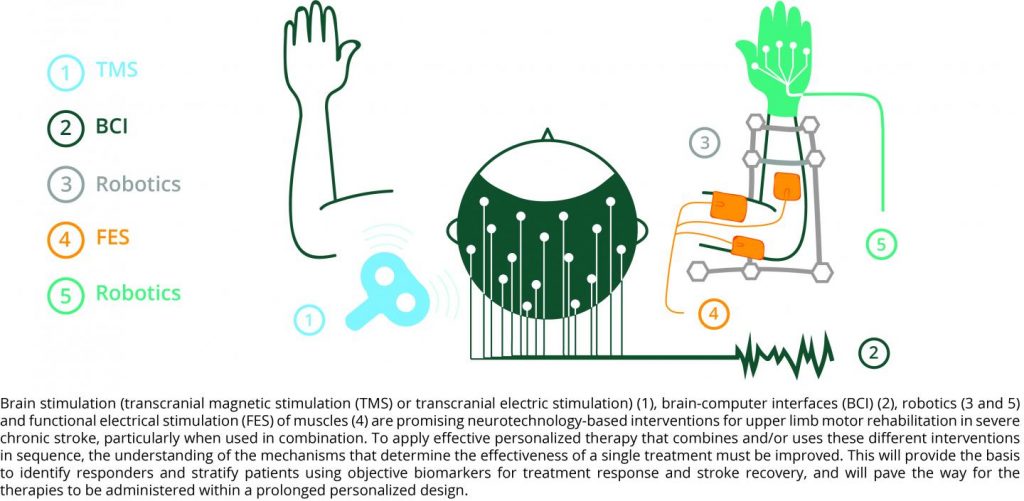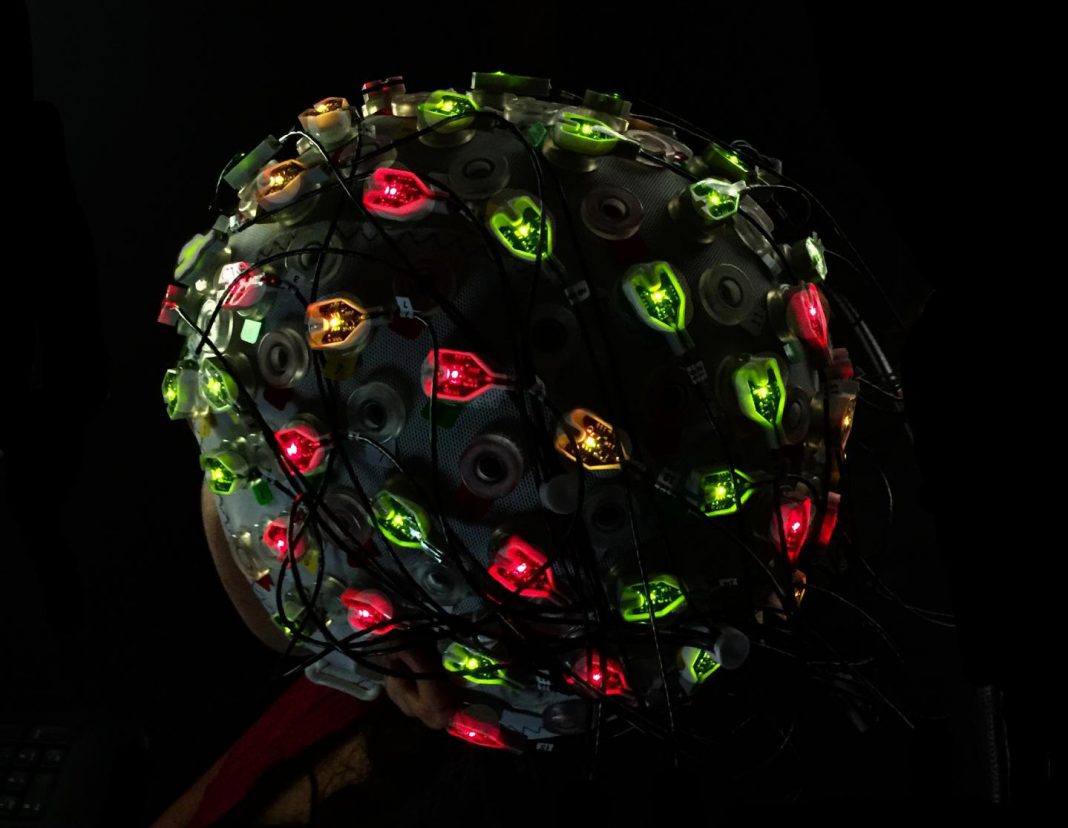Personalized neurotechnology-aided rehabilitation of the arm could improve recovery in severe chronic stroke patients according to researchers who published their study (“Neurotechnology-aided interventions for upper limb motor rehabilitation in severe chronic stroke”) in Brain.

“Upper limb motor deficits in severe stroke survivors often remain unresolved over extended time periods. Novel neurotechnologies have the potential to significantly support upper limb motor restoration in severely impaired stroke individuals. Here, we review recent controlled clinical studies and reviews focusing on the mechanisms of action and effectiveness of single and combined technology-aided interventions for upper limb motor rehabilitation after stroke, including robotics, muscular electrical stimulation, brain stimulation, and brain computer/machine interfaces,” the investigators wrote.
“We aim at identifying possible guidance for the optimal use of these new technologies to enhance upper limb motor recovery, especially in severe chronic stroke patients. We found that the current literature does not provide enough evidence to support strict guidelines, because of the variability of the procedures for each intervention and of the heterogeneity of the stroke population. The present results confirm that neurotechnology-aided upper limb rehabilitation is promising for severe chronic stroke patients, but the combination of interventions often lacks understanding of single intervention mechanisms of action, which may not reflect the summation of single intervention’s effectiveness.
“Stroke rehabilitation is a long and complex process, and one single intervention administrated in a short time interval cannot have a large impact for motor recovery, especially in severely impaired patients. To design personalized interventions combining or proposing different interventions in sequence, it is necessary to have an excellent understanding of the mechanisms determining the effectiveness of a single treatment in this heterogeneous population of stroke patients. We encourage the identification of objective biomarkers for stroke recovery for patients’ stratification and to tailor treatments.

Neurotechnology-based therapies will lead to the largest treatment effects and success if they are tailored to the needs of individual patients and used in combination, say the authors from the Wyss Center for Bio and Neuroengineering, Swiss Federal Institute of Technology Lausanne (EPFL), Scuola Superiore Sant’Anna, University of Geneva Faculty of Medicine, and Clinique Romande de Réadaptation. The team calls for longitudinal clinical studies to show the rehabilitation benefits of individual therapies as well as the use of multiple complementary therapies used in combination over long time periods.
“Our findings show that neurotechnology-aided upper limb rehabilitation is promising for severe chronic stroke patients,” explained Martina Coscia, staff engineer at the Wyss Center. “We suggest a move towards a personalized combination of neurotechnology-based stroke rehabilitation therapies, ideally in a home-based environment where prolonged therapy is more feasible than in a clinic. We believe that by sequentially introducing stroke therapies according to individual progress, we could allow patients to continue their recovery beyond what is possible today.”
The interdisciplinary research team is now starting a clinical trial to test these ideas. The trial uses a new experimental design with a personalized therapy approach using brain-computer interfaces, robotics, functional electrical stimulation, and brain stimulation specifically chosen to maximize treatment effects in each individual patient. The goal is to keep incrementally improving recovery by using new personalized, neurotechnology-based therapies in combination. The trial will start in Switzerland this summer.







